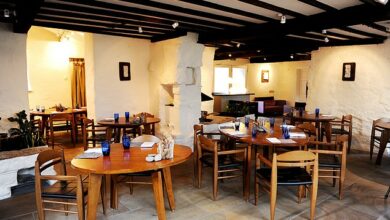Cambodia? It’s wild! Skip Angkor Wat and explore this country’s natural wonders for an epic adventure

As we float in the middle of the Mekong River, we hold our breath. Our guide in the kayak next to us points out where to look.
And there it is: a hissing sound, like a great sigh or sneeze, and the flash of a shiny gray back, arching out of the water and disappearing again. It is a rare Irrawaddy dolphin. And then another. And another. Sometimes they emerge just a few meters from the kayak, almost within reach.
Irrawaddy dolphins, named after the Irrawaddy River in Myanmar, are found here on the Mekong in Cambodia. They are shyer than their bottlenose cousins, less given to showy acrobatics. But this elusiveness makes them even more fascinating.
Instead of a long bottle nose, they have a convex forehead and a short, truncated bill that gives them a cuddly appearance. When the river is low from January to May, they gather in nine deep pools along a stretch of the Mekong that runs from the Laotian border south to the Cambodian town of Kratie, a six-hour minibus ride northeast of the capital Phnom Penh.
The current takes you downstream through small islands and a flooded forest. We stop for a swim in the clean, clear water and eat some sticky rice while our guide explains the challenges facing these critically endangered dolphins, such as hydroelectric dams built upstream that are destroying their habitat. There are now fewer than 100 dolphins left on the Mekong, although two calves were fortunately born this year.

Simple Living: Annabel Venning travels to Cambodia to explore some of its natural wonders. Above – a woman watering plants along the Mekong River
That evening, we watch the sun set over a Mekong Sunset cocktail on the balcony of our guesthouse, the Sorya, which runs the kayaking tours. Angkor Wat, near Siem Reap, put Cambodia on the world tourist map – but the landscape and wildlife are just as enchanting.
Just 13km from Siem Reap, Pearaing Biodiversity Conservation Center is located on the northern shores of Tonle Sap Lake. Here you can spot pelicans, egrets, storks and fish eagles.
Conservation is in constant conflict with development in Cambodia, which has lost 15 percent of its forest in a decade. Illegal loggers and private developers wreak havoc. But pristine jungle remains, home to some of the few remaining wild Asian elephants, along with porcupines and pangolins, civets, sun bears and clouded leopards.

There is still pristine jungle in Cambodia, where some of the few remaining wild Asian elephants roam, Annabel reveals

‘Angkor Wat, near Siem Reap, put Cambodia on the world tourist map – but the landscape and wildlife are just as enchanting,’ writes Annabel. Above are the Cardamom Mountains
You can help protect them by visiting the country’s Community Based Ecotourism projects. We visit one in the village of Steung Areng, supported by the Wildlife Alliance, which protects the Central Cardamom Mountains National Park, the largest mainland rainforest in Southeast Asia.
After a five-hour taxi ride south of Phnom Penh, my friend and I jump on the back of a motorbike to the starting point. After three hours of sweaty climbing through the jungle, we arrive at a valley where a waterfall ripples into a pool. We swim, eat rice cooked in banana leaves and sleep in hammocks between trees, waking up to the jungle orchestra.
We don’t see any elephants, bears or pangolins, but hornbills float below us and monkeys run through the treetops. Back at the starting point we wait for our motorbikes back to Steung Areng.

Annabel sees rare Irrawaddy dolphins, which live in the Mekong River in Cambodia

During a visit to the island of Koh Rong Sanloem, above, Annabel swims among bioluminescent plankton
Cambodian homes have open fronts and the people are as open as their homes. It doesn’t take long before we are invited inside and offered drinks. Despite the widespread poverty, the warmth of the Cambodian people makes it a safe and friendly place to travel.
Next we head to the islands off the south coast, first to Koh Thmei, where we stay in the only resort – eight pretty beach huts along a palm-fringed beach.
Then it’s Koh Rong Sanloem, where we paddleboard to watch the sunset and swim among bioluminescent plankton. It’s like glitter is squirting from our fingertips. Just like the plankton, Cambodia sparkles in so many ways.




